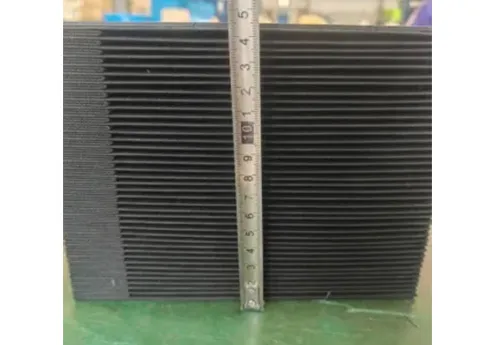Guide to Selecting the Right Cable Drag Chain Sizes for Your Applications
Understanding Cable Drag Chain Size Charts A Comprehensive Guide
In modern manufacturing and automation, the effective management of wires and cables is crucial for ensuring smoother operations and enhanced safety. One essential component that helps in this regard is the cable drag chain, often referred to as cable conveyors or energy chains. These chains protect cables and hoses from wear and tear while allowing for smooth movement along machinery. A key aspect of utilizing cable drag chains effectively is understanding the cable drag chain size chart, which offers comprehensive information on the appropriate dimensions and specifications required for various applications.
What is a Cable Drag Chain?
A cable drag chain is a flexible conduit that guides and protects the movement of cables and hoses in systems where relative motion occurs. Automated machinery, robotic arms, and CNC machines are some common applications of cable drag chains. The drag chains are designed to reduce the risk of cables tangling, kinking, or experiencing excessive wear due to constant movement.
Importance of Proper Sizing
Choosing the right size of a cable drag chain is critical for ensuring optimal performance. An improperly sized chain can lead to cable damage, increased friction, and poor movement efficiency. On the flip side, a chain that is too large can lead to unnecessary weight and unmanageable space occupancy. Therefore, understanding the cable drag chain size chart becomes vital in selecting the right drag chain for your specific needs.
Cable Drag Chain Size Chart Breakdown
A typical cable drag chain size chart includes several key measurements the inner height, inner width, pitch, and the maximum cable diameter that can fit within the chain. Here is a breakdown of these measurements
1. Inner Height This measurement indicates the vertical space available within the drag chain. It should be sufficient to accommodate the cables without compressing them, allowing for free movement.
2. Inner Width The inner width provides the lateral space for the cables and hoses. It’s crucial to choose a width that not only fits the cables but also allows them to move freely without rubbing against each other.
3. Pitch The pitch is the distance between the centers of two consecutive links in the drag chain. This measurement affects the movement and flexibility of the chain.
cable drag chain size chart

4. Maximum Cable Diameter This specifies the largest cable that the drag chain can accommodate. Exceeding this diameter can lead to cable damage and affect the chain's overall efficiency.
5. Bending Radius The bending radius is essential for understanding how sharply the cables can bend without sustaining damage. It’s a crucial factor when the drag chain is subject to tight turns.
Factors to Consider When Selecting a Drag Chain
When referring to the cable drag chain size chart, several other factors should be considered
- Application Environment The working environment can impact the choice of drag chain. For example, a dusty or wet environment may require chains that are more resistant to contaminants.
- Load Capacity Assess the weight of the cables being used. The drag chain should have a load capacity that exceeds the cumulative weight of all cables to ensure durability and prevent breakage.
- Movement Cycle Frequency For applications that require high-frequency movements, selecting a drag chain designed for high cycles can minimize wear and extend service life.
- Material Various materials offer different tensions, flexibilities, and temperatures. Select a material that fits the specific needs of the application.
Conclusion
Understanding cable drag chain size charts is fundamental for maximizing efficiency and minimizing cable wear in machinery and automation systems. By carefully selecting the appropriate size and considering various factors, companies can ensure enhanced productivity and longevity of their equipment. A well-chosen drag chain not only protects the cables but also improves operational efficiency, making understanding these specifications invaluable for engineers and technicians alike. As technology continues to advance, so too will the specifications and applications of cable drag chains, ensuring they remain an essential component of modern industrial operations.








